-

May
26
Ukraine emergency funds calls for $500M for US producers

The Biden Administration recently requested Congress to supply emergency supplemental funding, due to the war in Ukraine. In the $33 billion supplemental requests, the administration is seeking $500 million in food production assistance for U.S. farmers to incentivize additional production to offset potential shortfalls from Ukraine’s crop.
Read more
-

May
26
Study compares vegetarian diets verses traditional diets in children

A new study published in the journal Pediatrics by researchers at The University of Toronto, found children who eat vegetarian diets have similar growth outcomes to children who eat meat.
Read more
-

May
26
Poll shows people prefer meat over substitutes

On average, 68% of adults across 31 countries said they are concerned about climate change in their country, yet only 44% say they are likely to eat less meat or replace the meat in some meals with alternatives such as beans to attempt to limit their personal contribution to climate change.
Read more
-

May
26
New research highlights blue light technology on foodborne pathogens
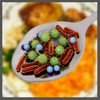
Researchers from The University of Georgia’s (UGA) Center for Food Safety have begun a new study to examine the effectiveness of antimicrobial blue light technology to reduce the foodborne pathogens that cause food poisoning.
Read more
-

May
26
Flavored milk will be allowed in NY schools

The International Dairy Foods Association (IDFA) has advocated for the inclusion of flavored milk in NYC schools. “I am pleased to see Mayor Adams following the lead of parents, physicians, and dietitians, all of whom widely support offering low-fat flavored milk to students in our public schools,” said Michael Dykes, D.V.M., president and CEO of IDFA.
Read more
-

May
26
Farmer’s request for extension to SEC proposed rule granted

The Enhancement and Standardization of Climate-Related Disclosures for Investors, a proposed rule by the United States Securities and Exchange Commission (SEC), would require registrants to provide certain climate-related information in their registration statements and annual reports.
Read more
-

May
26
“Big Four” meatpacker CEOs testify in front of congress
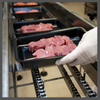
The top executives of the four biggest meatpacking companies in the United States faced lawmakers on Capitol Hill, regarding anti-competitive accusations. This is the first time any of the executives provided congressional testimony since the president and some lawmakers accused the companies of unfairly hiking meat prices.
Read more
-

May
19
Interpretive Summary: The effects of creep feed composition and form and nursery diet complexity on small intestinal morphology and jejunal mucosa-specific enzyme activities after weaning in pigs

After weaning, the piglet digestive tract must adapt in order to effectively break down and absorb nutrients derived from plant-based ingredients, contributing to the postweaning growth lag.
Read more
-

May
19
Interpretive Summary: Coated tannin supplementation improves growth performance, nutrients digestibility, and intestinal function in weaned piglets
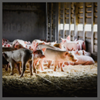
Studies in recent years have shown that tannic acid has various biological functions such as astringency, anti-inflammatory effect, and anti-oxidation property, which has good potential to improve diarrhea and intestinal health of animals.
Read more
-

May
19
Interpretive Summary: Effects of ferulic acid on the growth performance, antioxidant capacity, and intestinal development of piglets with intrauterine growth retardation

Intrauterine growth retardation (IUGR) impairs postnatal growth and development in neonatal piglets. Ferulic acid (FA) is a ubiquitous phenolic compound that is present in numerous fruits and vegetables and possesses various biological activities.
Read more
-

May
19
Interpretive Summary: Identification of functional single nucleotide polymorphisms in the porcine SLC6A4 gene associated with aggressive behavior in weaned pigs after mixing
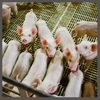
The current study identified the functional single nucleotide polymorphisms for the porcine SLC6A4 (serotonin transporter) gene associated with aggressive behavior of pigs after mixing.
Read more
-

May
19
Interpretive Summary: Effect of chemical and biological preservatives and ensiling stage on the dry matter loss, nutritional value, microbial counts, and ruminal in vitro gas production kinetics of wet brewer’s grain silage
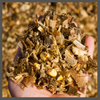
Wet brewer’s grain (WBG) is the most abundant byproduct in the manufacture of beer and its rich nutritional composition makes it a valuable feed for cattle. However, WBG is highly susceptible to spoilage so the application of cost-effective preservatives may be a viable approach to prevent nutrient losses during ensiling and feed out.
Read more
-

May
19
Interpretive Summary: Dietary supplementation with lysine (protein) stimulates mammary development in late pregnant gilts

Results indicate that the current National Research Council recommendations for dietary lysine during late pregnancy in pigs, the period when most mammary gland development takes place, are underestimated.
Read more
-

May
19
Interpretive Summary: Protective effect and possible mechanism of arctiin on broilers challenged by Salmonella pullorum
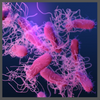
Pullorosis caused by Salmonella pullorum (S. pullorum) is a severe contagious disease and could cause great economic loss to the poultry industry. Antibiotics are usually used to control pullorosis, while prolonged use of antibiotics has led to the emergence of multidrug-resistant bacterial strains
Read more
-

May
19
Interpretive Summary: A risk-oriented evaluation of biofilm and other influencing factors on biological quality of drinking water for dairy cows
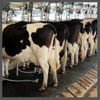
This study aimed to evaluate biological water quality on Western German dairy farms, identify potential risk factors for impairment, and evaluate rapid test systems to score the hygienic status of troughs.
Read more
-

May
19
Interpretive Summary: Is single-step genGrowth performance, bone mineralization, nutrient digestibility, and fecal microbial composition of multi-enzyme-supplemented low-nutrient diets for growing-finishing pigs
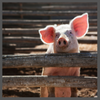
A study evaluated the effects of supplementing a multi-enzyme mixture that contain fiber degrading enzymes and phytase on the growth performance, bone strength, and fecal microbial composition of grow-finish pigs fed corn-wheat-wheat bran-based diets.
Read more
-

May
19
Interpretive Summary: Is single-step genomic REML with the algorithm for proven and young more computationally efficient when less generations of data are present?
.png?sfvrsn=d1054dd1_0)
The estimation of variance components is computationally expensive under large-scale genetic evaluations due to several inversions of the coefficient matrix. Variance components are used as parameters for estimating breeding values in mixed model equations (MME).
Read more
-

May
12
Interpretive Summary: Supplementation of live yeast culture modulates intestinal health, immune responses, and microbiota diversity in broiler chickens
.png?sfvrsn=3bf84dd1_0)
Live yeast culture (LYC) is composed of Saccharomyces cerevisiae and its metabolites such as mannan-oligosaccharides, peptides, nucleotides, vitamins and unknown growth factors. The supplementation of LYC is expected to exert health benefits in animals; however, the responses of broiler chickens to supplemental LYC is not fully explored.
Read more
-

May
12
Interpretive Summary: Mineral-salt supplementation to ameliorate larkspur poisoning in cattle
.png?sfvrsn=12f84dd1_0)
Larkspurs (Delphinium spp.) are native forbs poisonous to cattle and cost livestock producers millions of dollars in losses each year. The role mineral status may play in larkspur poisoning in cattle is unclear.
Read more
-

May
12
Interpretive Summary: Elliptical and linear relationships with rumen temperature support a homeorhetic trajectory for DMI during recovery of feedlot cattle exposed to moderate heat load

Over any summer, most feedlot steers in Australia will encounter 2 to 3 moderate heat waves lasting 5 to 6 d. The ability of these animals to adjust to the hot conditions and recovery from them is not well understood.
Read more
 MayUkraine emergency funds calls for $500M for US producers
MayUkraine emergency funds calls for $500M for US producers The Biden Administration recently requested Congress to supply emergency supplemental funding, due to the war in Ukraine. In the $33 billion supplemental requests, the administration is seeking $500 million in food production assistance for U.S. farmers to incentivize additional production to offset potential shortfalls from Ukraine’s crop.
The Biden Administration recently requested Congress to supply emergency supplemental funding, due to the war in Ukraine. In the $33 billion supplemental requests, the administration is seeking $500 million in food production assistance for U.S. farmers to incentivize additional production to offset potential shortfalls from Ukraine’s crop. MayStudy compares vegetarian diets verses traditional diets in children
MayStudy compares vegetarian diets verses traditional diets in children A new study published in the journal Pediatrics by researchers at The University of Toronto, found children who eat vegetarian diets have similar growth outcomes to children who eat meat.
A new study published in the journal Pediatrics by researchers at The University of Toronto, found children who eat vegetarian diets have similar growth outcomes to children who eat meat. MayPoll shows people prefer meat over substitutes
MayPoll shows people prefer meat over substitutes On average, 68% of adults across 31 countries said they are concerned about climate change in their country, yet only 44% say they are likely to eat less meat or replace the meat in some meals with alternatives such as beans to attempt to limit their personal contribution to climate change.
On average, 68% of adults across 31 countries said they are concerned about climate change in their country, yet only 44% say they are likely to eat less meat or replace the meat in some meals with alternatives such as beans to attempt to limit their personal contribution to climate change. MayNew research highlights blue light technology on foodborne pathogens
MayNew research highlights blue light technology on foodborne pathogens Researchers from The University of Georgia’s (UGA) Center for Food Safety have begun a new study to examine the effectiveness of antimicrobial blue light technology to reduce the foodborne pathogens that cause food poisoning.
Researchers from The University of Georgia’s (UGA) Center for Food Safety have begun a new study to examine the effectiveness of antimicrobial blue light technology to reduce the foodborne pathogens that cause food poisoning. MayFlavored milk will be allowed in NY schools
MayFlavored milk will be allowed in NY schools The International Dairy Foods Association (IDFA) has advocated for the inclusion of flavored milk in NYC schools. “I am pleased to see Mayor Adams following the lead of parents, physicians, and dietitians, all of whom widely support offering low-fat flavored milk to students in our public schools,” said Michael Dykes, D.V.M., president and CEO of IDFA.
The International Dairy Foods Association (IDFA) has advocated for the inclusion of flavored milk in NYC schools. “I am pleased to see Mayor Adams following the lead of parents, physicians, and dietitians, all of whom widely support offering low-fat flavored milk to students in our public schools,” said Michael Dykes, D.V.M., president and CEO of IDFA. MayFarmer’s request for extension to SEC proposed rule granted
MayFarmer’s request for extension to SEC proposed rule granted The Enhancement and Standardization of Climate-Related Disclosures for Investors, a proposed rule by the United States Securities and Exchange Commission (SEC), would require registrants to provide certain climate-related information in their registration statements and annual reports.
The Enhancement and Standardization of Climate-Related Disclosures for Investors, a proposed rule by the United States Securities and Exchange Commission (SEC), would require registrants to provide certain climate-related information in their registration statements and annual reports. May“Big Four” meatpacker CEOs testify in front of congress
May“Big Four” meatpacker CEOs testify in front of congress The top executives of the four biggest meatpacking companies in the United States faced lawmakers on Capitol Hill, regarding anti-competitive accusations. This is the first time any of the executives provided congressional testimony since the president and some lawmakers accused the companies of unfairly hiking meat prices.
The top executives of the four biggest meatpacking companies in the United States faced lawmakers on Capitol Hill, regarding anti-competitive accusations. This is the first time any of the executives provided congressional testimony since the president and some lawmakers accused the companies of unfairly hiking meat prices. MayInterpretive Summary: The effects of creep feed composition and form and nursery diet complexity on small intestinal morphology and jejunal mucosa-specific enzyme activities after weaning in pigs
MayInterpretive Summary: The effects of creep feed composition and form and nursery diet complexity on small intestinal morphology and jejunal mucosa-specific enzyme activities after weaning in pigs After weaning, the piglet digestive tract must adapt in order to effectively break down and absorb nutrients derived from plant-based ingredients, contributing to the postweaning growth lag.
After weaning, the piglet digestive tract must adapt in order to effectively break down and absorb nutrients derived from plant-based ingredients, contributing to the postweaning growth lag. MayInterpretive Summary: Coated tannin supplementation improves growth performance, nutrients digestibility, and intestinal function in weaned piglets
MayInterpretive Summary: Coated tannin supplementation improves growth performance, nutrients digestibility, and intestinal function in weaned piglets Studies in recent years have shown that tannic acid has various biological functions such as astringency, anti-inflammatory effect, and anti-oxidation property, which has good potential to improve diarrhea and intestinal health of animals.
Studies in recent years have shown that tannic acid has various biological functions such as astringency, anti-inflammatory effect, and anti-oxidation property, which has good potential to improve diarrhea and intestinal health of animals. MayInterpretive Summary: Effects of ferulic acid on the growth performance, antioxidant capacity, and intestinal development of piglets with intrauterine growth retardation
MayInterpretive Summary: Effects of ferulic acid on the growth performance, antioxidant capacity, and intestinal development of piglets with intrauterine growth retardation Intrauterine growth retardation (IUGR) impairs postnatal growth and development in neonatal piglets. Ferulic acid (FA) is a ubiquitous phenolic compound that is present in numerous fruits and vegetables and possesses various biological activities.
Intrauterine growth retardation (IUGR) impairs postnatal growth and development in neonatal piglets. Ferulic acid (FA) is a ubiquitous phenolic compound that is present in numerous fruits and vegetables and possesses various biological activities. MayInterpretive Summary: Identification of functional single nucleotide polymorphisms in the porcine SLC6A4 gene associated with aggressive behavior in weaned pigs after mixing
MayInterpretive Summary: Identification of functional single nucleotide polymorphisms in the porcine SLC6A4 gene associated with aggressive behavior in weaned pigs after mixing The current study identified the functional single nucleotide polymorphisms for the porcine SLC6A4 (serotonin transporter) gene associated with aggressive behavior of pigs after mixing.
The current study identified the functional single nucleotide polymorphisms for the porcine SLC6A4 (serotonin transporter) gene associated with aggressive behavior of pigs after mixing. MayInterpretive Summary: Effect of chemical and biological preservatives and ensiling stage on the dry matter loss, nutritional value, microbial counts, and ruminal in vitro gas production kinetics of wet brewer’s grain silage
MayInterpretive Summary: Effect of chemical and biological preservatives and ensiling stage on the dry matter loss, nutritional value, microbial counts, and ruminal in vitro gas production kinetics of wet brewer’s grain silage Wet brewer’s grain (WBG) is the most abundant byproduct in the manufacture of beer and its rich nutritional composition makes it a valuable feed for cattle. However, WBG is highly susceptible to spoilage so the application of cost-effective preservatives may be a viable approach to prevent nutrient losses during ensiling and feed out.
Wet brewer’s grain (WBG) is the most abundant byproduct in the manufacture of beer and its rich nutritional composition makes it a valuable feed for cattle. However, WBG is highly susceptible to spoilage so the application of cost-effective preservatives may be a viable approach to prevent nutrient losses during ensiling and feed out. MayInterpretive Summary: Dietary supplementation with lysine (protein) stimulates mammary development in late pregnant gilts
MayInterpretive Summary: Dietary supplementation with lysine (protein) stimulates mammary development in late pregnant gilts Results indicate that the current National Research Council recommendations for dietary lysine during late pregnancy in pigs, the period when most mammary gland development takes place, are underestimated.
Results indicate that the current National Research Council recommendations for dietary lysine during late pregnancy in pigs, the period when most mammary gland development takes place, are underestimated. MayInterpretive Summary: Protective effect and possible mechanism of arctiin on broilers challenged by Salmonella pullorum
MayInterpretive Summary: Protective effect and possible mechanism of arctiin on broilers challenged by Salmonella pullorum Pullorosis caused by Salmonella pullorum (S. pullorum) is a severe contagious disease and could cause great economic loss to the poultry industry. Antibiotics are usually used to control pullorosis, while prolonged use of antibiotics has led to the emergence of multidrug-resistant bacterial strains
Pullorosis caused by Salmonella pullorum (S. pullorum) is a severe contagious disease and could cause great economic loss to the poultry industry. Antibiotics are usually used to control pullorosis, while prolonged use of antibiotics has led to the emergence of multidrug-resistant bacterial strains MayInterpretive Summary: A risk-oriented evaluation of biofilm and other influencing factors on biological quality of drinking water for dairy cows
MayInterpretive Summary: A risk-oriented evaluation of biofilm and other influencing factors on biological quality of drinking water for dairy cows This study aimed to evaluate biological water quality on Western German dairy farms, identify potential risk factors for impairment, and evaluate rapid test systems to score the hygienic status of troughs.
This study aimed to evaluate biological water quality on Western German dairy farms, identify potential risk factors for impairment, and evaluate rapid test systems to score the hygienic status of troughs. MayInterpretive Summary: Is single-step genGrowth performance, bone mineralization, nutrient digestibility, and fecal microbial composition of multi-enzyme-supplemented low-nutrient diets for growing-finishing pigs
MayInterpretive Summary: Is single-step genGrowth performance, bone mineralization, nutrient digestibility, and fecal microbial composition of multi-enzyme-supplemented low-nutrient diets for growing-finishing pigs A study evaluated the effects of supplementing a multi-enzyme mixture that contain fiber degrading enzymes and phytase on the growth performance, bone strength, and fecal microbial composition of grow-finish pigs fed corn-wheat-wheat bran-based diets.
A study evaluated the effects of supplementing a multi-enzyme mixture that contain fiber degrading enzymes and phytase on the growth performance, bone strength, and fecal microbial composition of grow-finish pigs fed corn-wheat-wheat bran-based diets. MayInterpretive Summary: Is single-step genomic REML with the algorithm for proven and young more computationally efficient when less generations of data are present?
MayInterpretive Summary: Is single-step genomic REML with the algorithm for proven and young more computationally efficient when less generations of data are present?.png?sfvrsn=d1054dd1_0) The estimation of variance components is computationally expensive under large-scale genetic evaluations due to several inversions of the coefficient matrix. Variance components are used as parameters for estimating breeding values in mixed model equations (MME).
The estimation of variance components is computationally expensive under large-scale genetic evaluations due to several inversions of the coefficient matrix. Variance components are used as parameters for estimating breeding values in mixed model equations (MME). MayInterpretive Summary: Supplementation of live yeast culture modulates intestinal health, immune responses, and microbiota diversity in broiler chickens
MayInterpretive Summary: Supplementation of live yeast culture modulates intestinal health, immune responses, and microbiota diversity in broiler chickens.png?sfvrsn=3bf84dd1_0) Live yeast culture (LYC) is composed of Saccharomyces cerevisiae and its metabolites such as mannan-oligosaccharides, peptides, nucleotides, vitamins and unknown growth factors. The supplementation of LYC is expected to exert health benefits in animals; however, the responses of broiler chickens to supplemental LYC is not fully explored.
Live yeast culture (LYC) is composed of Saccharomyces cerevisiae and its metabolites such as mannan-oligosaccharides, peptides, nucleotides, vitamins and unknown growth factors. The supplementation of LYC is expected to exert health benefits in animals; however, the responses of broiler chickens to supplemental LYC is not fully explored. MayInterpretive Summary: Mineral-salt supplementation to ameliorate larkspur poisoning in cattle
MayInterpretive Summary: Mineral-salt supplementation to ameliorate larkspur poisoning in cattle.png?sfvrsn=12f84dd1_0) Larkspurs (Delphinium spp.) are native forbs poisonous to cattle and cost livestock producers millions of dollars in losses each year. The role mineral status may play in larkspur poisoning in cattle is unclear.
Larkspurs (Delphinium spp.) are native forbs poisonous to cattle and cost livestock producers millions of dollars in losses each year. The role mineral status may play in larkspur poisoning in cattle is unclear. MayInterpretive Summary: Elliptical and linear relationships with rumen temperature support a homeorhetic trajectory for DMI during recovery of feedlot cattle exposed to moderate heat load
MayInterpretive Summary: Elliptical and linear relationships with rumen temperature support a homeorhetic trajectory for DMI during recovery of feedlot cattle exposed to moderate heat load Over any summer, most feedlot steers in Australia will encounter 2 to 3 moderate heat waves lasting 5 to 6 d. The ability of these animals to adjust to the hot conditions and recovery from them is not well understood.
Over any summer, most feedlot steers in Australia will encounter 2 to 3 moderate heat waves lasting 5 to 6 d. The ability of these animals to adjust to the hot conditions and recovery from them is not well understood.



